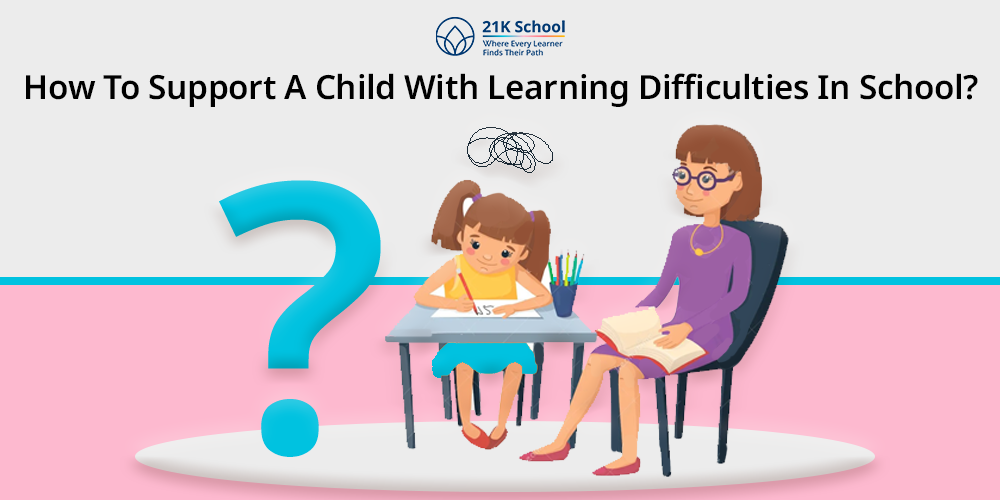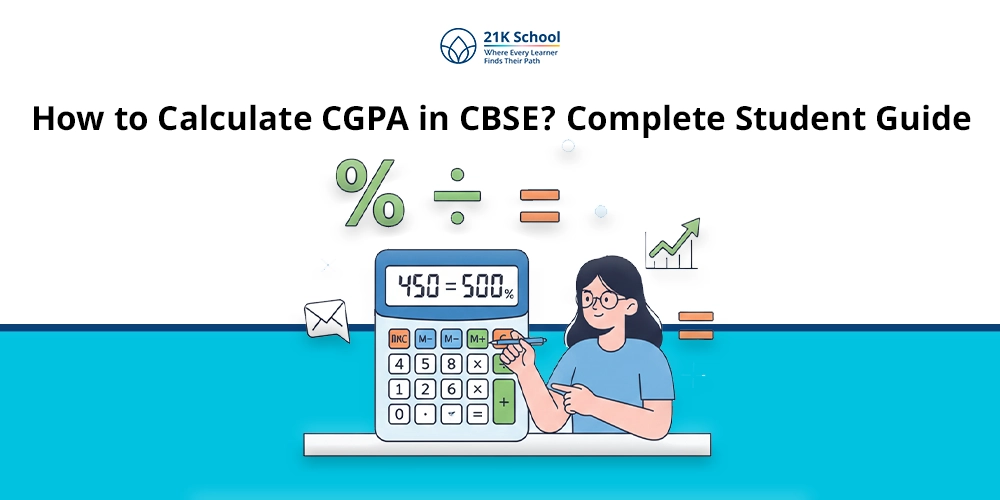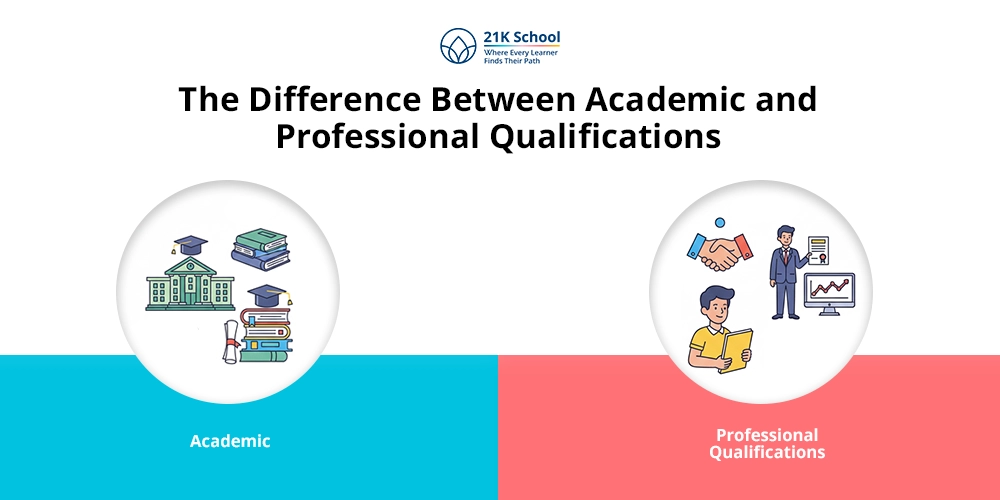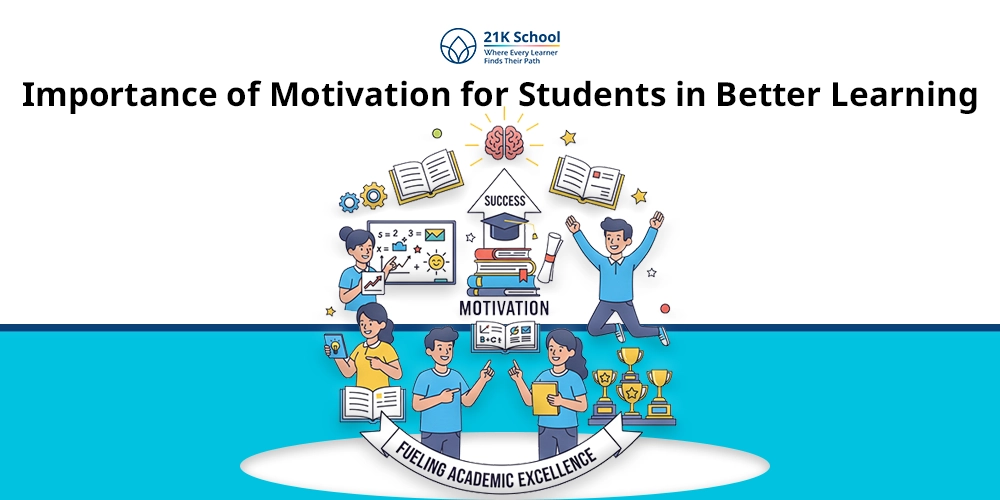
Dealing with learning difficulties can create many challenges for children in the classroom. It not only affects how they gain information but also social interactions.
These challenges can happen due to dyslexia, ADHD to processing disorders and more generalized academic struggles.
But, with these obstacles, children with learning difficulties have the potential to gain modern education when given the right tools, support and positive learning environment .
As parents and facilitators, the objective is not just to teach content but to empower children to learn in the way that works best for them. This requires special education and interactive online teaching .
Whether you are an educator looking to create an inclusive classroom or a parent who wants a better future for your child, we guide you on a path to success.
Let’s understand 17 effective tips on how to support children with learning difficulties in school, from practical classroom strategies to emotional and social support.
Contents
- 17 Tips on How to Support Children with Learning Difficulties in School
- 1. Utilize Multisensory Learning
- 2. Break Big Tasks To Smaller Ones
- 3. Embrace Diverse Activities
- 4. Help The Child Learn To Play
- 5. Identify Learning Styles
- 6. Inculcate Curiosity
- 7. Join Support Groups
- 8. Remedial Instruction
- 9. Learn More About Learning Disabilities
- 10. Provide Emotional Support
- 11. Concentrate on Child’s Strengths, not Weaknesses
- 12. Provide Opportunities for Peer Tutoring
- 13. Regular Communication with Your Child’s Teacher
- 14. Implement Assistive Technologies
- 15. Provide Extended Time for Assignments and Tests
- 16. Offer Individualized Support
- 17. Collaborate with Parents and Specialists
- Conclusion
17 Tips on How to Support Children with Learning Difficulties in School
It is crucial to support a child with learning difficulties in school by focusing on the creation of an inclusive environment, employing tailored strategies and fostering a good learning environment .
Educators and parents can utilise multisensory teaching techniques, providing clear and concise instructions, and offering emotional support to build confidence and resilience.
Here Some Important Tips for Supporting Children with Learning Difficulties:
1. Utilize Multisensory Learning
Utilising multisensory learning means student engagement of multiple senses such as sight, sound, touch, movement, taste, smell.
It enhances learning and memory, particularly for children with learning difficulties. The method is advantageous for learners dealing with dyslexia, ADHD, or other learning disabilities.
Understand the power of memory games for kids .
Multisensory learning provides ideal ways to process information beyond traditional auditory and visual methods.
If educators implement activities which stimulate learners’ multiple senses can create a more inclusive and effective learning environment for them.
2. Break Big Tasks To Smaller Ones
Breaking big tasks to smaller ones helps in reducing the complexity of many tasks. It becomes manageable for learners.
This step is a highly effective strategy to engage students in the classroom especially who are dealing with learning difficulties.
Now the learner can improve focus, build confidence and enhance the outcome of successful task completion.
3. Embrace Diverse Activities
Embracing diverse activities is an effective support for children with learning difficulties. With various activities educators should promote inclusive education in school .
This involves understanding individual learning styles, providing accessible learning materials, and fostering a collaborative and supportive classroom environment.
Explore various ways how to teach collaboration skills to students .
By focusing on strengths, promoting student voice, and offering flexible learning options, schools can create an inclusive space where all students can thrive.
4. Help The Child Learn To Play
Children with learning difficulties need more time to do normal work and helping the child to learn through play is an ideal approach.
Teachers and parents should focus on creating a fun, engaging, and supportive environment that utilizes play-based activities to foster learning.
This involves minimising tasks or making them into smaller steps, using visual learning , encouraging open communication skills , and celebrating effort over performance.
By including play, kids can develop essential skills, build confidence, and enjoy the learning techniques.
5. Identify Learning Styles
Facilitators and parents should identify their individual learning styles. It can be visual, auditory, kinesthetic, reading or writing.
This will support kids and help them to get customized teaching methods based on their needs.
Here, educators use a variety of strategies such as visual aids, verbal explanations, hands-on activities, and providing opportunities for discussion and collaboration.
6. Inculcate Curiosity
Schools can support children with learning difficulties and cultivate their curiosity by focusing on creating a stimulating and supportive learning environment.
This consists of encouraging questions, providing hands-on learning experiences, and adapting teaching methods to cater to different learning styles.
By increasing curiosity, learners can be helped to become more engaged and develop crucial problem-solving skills and critical thinking skills .
7. Join Support Groups
Joining support groups, making connections with parents, communicating regularly with teachers and utilising strategies like individualized education programs and multi-sensory learning techniques are ideal to support kids.
Active participation and collaboration ensures good habits of students .
8. Remedial Instruction
Remedial instruction refers to providing targeted support to learners with learning difficulties. It aims to close knowledge gaps and build confidence.
By this way learners identify specific areas of struggle, adapt the curriculum and use various teaching strategies like positive reinforcement.
Effective remedial teaching by educators offers regular feedback, parental involvement and the use of assistive technology.
9. Learn More About Learning Disabilities
Knowledge is a powerful way to handle things and learn more about learning disabilities such as dyslexia, dyscalculia, dysgraphia etc guide both parents and teachers.
One needs to take the time to research, attend workshops, and consult with professionals.
Understanding the depth of your child’s obstacles helps in responding with empathy and effectiveness.
This includes implementing strategies like chunking information, organizing information visually, and incorporating assistive technology.
Building a strong partnership between home and school through open communication and collaboration is also crucial for a child’s success.
10. Provide Emotional Support
Getting emotional support always reduces learning challenges of children with learning difficulties. It focuses on fostering a positive emotional environment.
This includes encouraging open communication, providing positive feedback and building confidence through tailored support and strategies. With the importance of inclusive education it becomes helpful.
Both parents and teachers need to be patient, calm, confident and celebrate small wins to boost their self-esteem and motivation each time they succeed.
11. Concentrate on Child’s Strengths, not Weaknesses
Concentrating on a child’s strengths, not weaknesses is important for facilitators and parents to support children with learning difficulties.
By exploring and helping to build their natural talents and abilities, facilitators and parents can increase confidence, motivation, and a positive self-image.
It is essential for academic and personal success of students. For example, a kid struggles with writing but like fairytales might write a story about a princess and her world.
12. Provide Opportunities for Peer Tutoring
One of the effective strategies to support children with learning difficulties is peer tutoring. It is a method where kids are pairing with more proficient students for academic support.
It is an ideal approach to foster collaboration, enhance social skills, improve inclusive education and boost confidence for both the tutor and the tutee.
Implementing a successful peer tutoring program requires careful planning, including selecting suitable tutors, providing training, and monitoring progress.
13. Regular Communication with Your Child’s Teacher
Regular communication between parents and teachers is important for children with learning difficulties.
Open and honest communication, along with a collaborative approach help parents to stay informed about a child’s academic progress, behavior in class, and the effectiveness of interventions.
Understand various types of communication skills to connect with kids who dealing with learning difficulties
Each child has some specific needs and this can only be seamlessly fulfilled by becoming a support system of the child.
14. Implement Assistive Technologies
Assistive technologies offer crucial support for children with learning difficulties in school.
This can be done by offering tools and strategies that enhance their access to learning and participation in the digital classrooms activities.
These future technologies range from low-tech options like pencil grips and highlighters to more advanced software and devices, like text-to-speech programs and speech recognition software.
By including required tools in the classroom can create a more inclusive education and supportive space where students with learning disabilities can take advantage.
15. Provide Extended Time for Assignments and Tests
Providing extended time for assignments and tests is a common and effective way to show support for students with learning difficulties.
This allows them to demonstrate their knowledge and skills without time constraints.
Students facing challenges like dyslexia, slow processing speed, or attention deficits need extra support then non disabled ones.
16. Offer Individualized Support
To effectively support children with learning difficulties in school, individualized support is important and effective.
This involves understanding each child’s unique needs, creating personalised learning plans, and utilizing various strategies like multi-sensory teaching, breaking down tasks, and providing positive reinforcement.
Open communication between educators, parents and councillors is also crucial for collaborative learning .
17. Collaborate with Parents and Specialists
Collaboration between parents, teachers and specialists is crucial which ensures effectively supporting children with learning difficulties in school.
This consists of shared goal setting, and a unified approach to address the child’s specific needs in the classroom learning .
By working with each other, the team can create a supportive and effective learning environment that fosters academic and personal growth.
Conclusion
Supporting a child with learning difficulties in school needs patience, problem-solving techniques and a deep understanding of each kid’s unique learning profile.
Guiding kids with learning difficulties is not about problem-solving , it’s about analyzing their needs, removing obstacles and empowering them to succeed in their own way.
Learners who get the right support with learning difficulties can improve their academic growth, social environment and emotional support. It helps in personality development of students with learning difficulties.
By applying the given tips like multisensory learning, individualized support, emotional nurturing, and effective collaboration, schools can create an environment where every child feels seen, supported, and capable of success.
Also explore various ways how children socialize with each other .
It’s time to work for a future of education in India where learning differences are not obstacles. However, an opportunity for special needs students to learn new ways of teaching, thinking, and growing.



